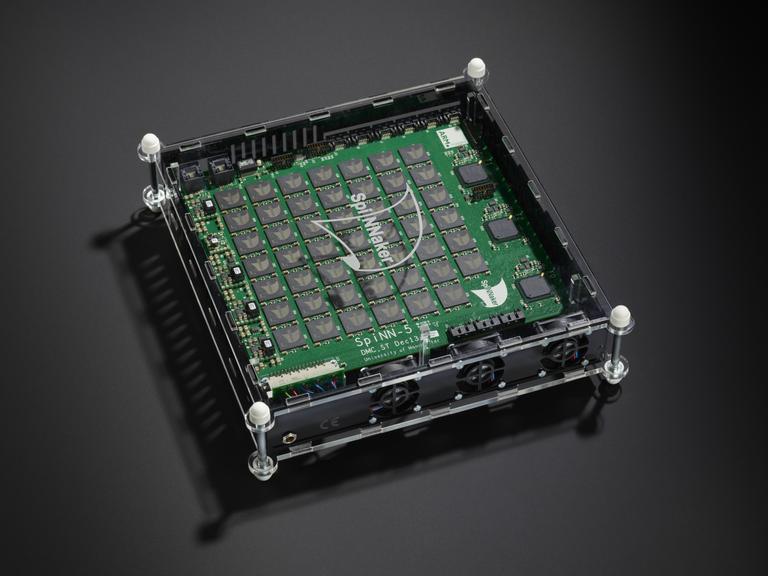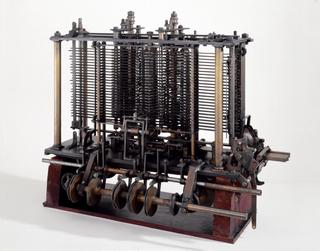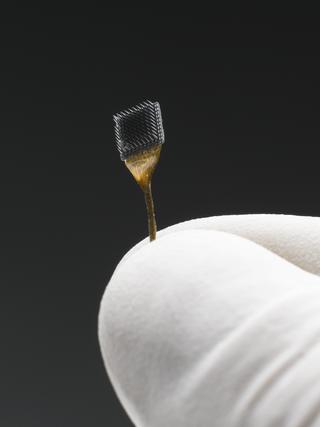
48-node SpiNNaker circuit board
- Made:
- 2013 in Widnes, Taiwan, Sichuan and United States
- maker:
- University of Manchester












48-node SpiNNaker (Spiking Neural Network Architecture) small-scale machine. Designed in 2013 by a team including Steve B. Furber at the University of Manchester, Department of Computer Science.
This 48-node circuit board is of spiNN5 PCB design, with 48 SpiNNaker packages incorporating 864 ARM processor cores in total. Known as a “103 machine”, as it has approximately ten to the power three (1000) processor cores.
The 48-node SpiNNaker circuit board is contained within an acrylic case, case cut and assembled at University of Manchester by David Clark. Case also contains three small commercially bought fans, a connector and wiring also assembled by David Clark. Printed circuit board was assembled by Norcott Technologies Limited in Widnes, Cheshire, but the manufacture of the many of the components was likely subcontracted to other companies. The SpiNNaker packages contain SpiNNaker chips designed by the University of Manchester and fabricated by UMC (United Microelectronics) in Taiwan, together with memory chips made by Micron Technology Incorporated in the USA. Two memory chips are assembled onto an internal substrate by Unisem in Chengdu, China, with gold wire bonding inside the plastic ball grid array package.
When fully functional, the processor cores are typically deployed as 768 application cores, 48 monitor processors and 48 spare cores. Requires a 12V 6A supply. This 48-node board is not a fully functional example.
SpiNNaker (Spiking Neural Network Architecture) is a prototype supercomputer, based at the University of Manchester, Oxford Road. SpiNNaker is inspired by the human brain. Unlike computers, the human brain is very energy efficient, highly resistant to component failure, and carries out many more actions at one time (it is massively parallel) than even the fastest supercomputers. With SpiNNaker, computing engineers are attempting to imitate these features of the human brain, to build a novel computer architecture. To do so, this SpiNNaker circuit board has 864 Arm processors. The complete SpiNNaker machine, based at the University of Manchester, has over 1,000,000 Arm processors. For reference, most smartphones contain one Arm processor.
We still know so little about the brain. Perhaps if we try to build a machine that mimics it, to the best of our understanding, we can start to understand the brain more. SpiNNaker has modelled spiking neural networks of the scale of a mouse brain in biological real time. The mouse brain operates at around a thousandth of a scale of the human brain – but this is still a step forward.
SpiNNaker is the United Kingdom’s contribution to the Human Brain Project, funded by the European Commission. It is free to use for members of the Human Brain Project.
Details
- Category:
- Computing & Data Processing
- Object Number:
- 2022-629
- Materials:
- ceramic (unspecified), acrylic, copper (alloy), gold (metal), plastic (unidentified), copper (metal), glass, resin (unidentified) and fibreglass
- Measurements:
-
overall: 300 mm x 290 mm x 90 mm,
- type:
- circuit board




